Mechanical Hub kicks off its 2023 Industry Forecast series with good friend, Bruce Carnevale, President and CEO, Bradford White Corporation. You would think coming out of a global pandemic there might be signs of positive growth. But hold your horses, as they used to say. For the economy to back on the right track, it’s going Read more
industry forecast
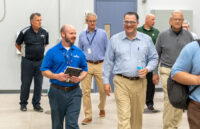
Mechanical Hub kicks off its 2023 Industry Forecast series with good friend, Bruce Carnevale, President and CEO, Bradford White Corporation. You would think coming out of a global pandemic there might be signs of positive growth. But hold your horses, as they used to say. For the economy to back on the right track, it’s going to take some time, and steady leadership.
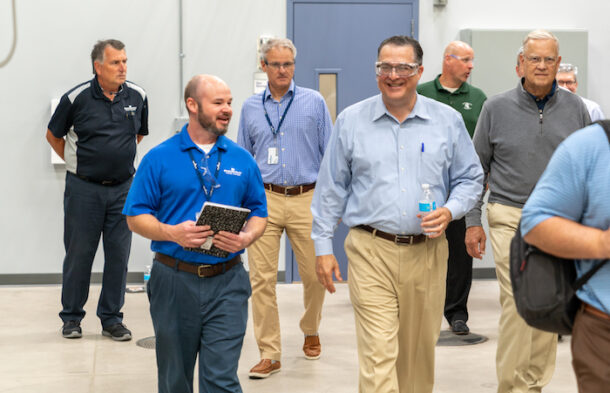
Bruce Carnevale, center, right, holding water bottle
MH: I’ve heard that the first half of 2023 might be a bit bumpy, how do you see 2023 shaking out and the short-term economy in general?
Carnevale: I’m actually a bit more concerned about the 2nd half of 2023, John. While most economic indicators are not good right now, some are headed in the right direction so there feels like there is a bit of stability for now. Even though it has moderated the past couple of months, inflation continues to be stubbornly high, but the jobs market had been surprisingly strong. I’m not sure everyone understands that when the inflation rate falls from 9.1% to 6.5% (for current US inflation info), that doesn’t mean prices have fallen. It means that prices are increasing at a lesser rate, but they are still increasing at over three times the Fed’s target rate!
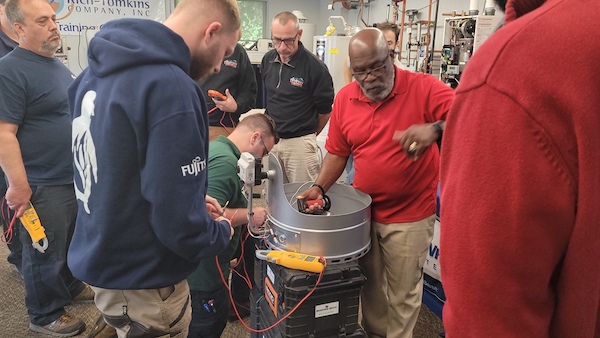
I believe that historically high prices have slowed demand, and helped slow the pace of inflation more so than the Fed’s rate increases have up until now. It takes time for the Fed’s actions to take hold, and I think we will see the impact of that later this year in the form of a significant slowdown. If not technically a recession, I think it will feel like one to the American consumer. I hope that the Fed becomes less aggressive with its 2023 rate increases.
I mentioned that the labor market has remained strong, but my sense is that is changing fast…every day we are hearing of new layoffs at some of the country’s largest employers. This is a clear indication of how much demand has slowed, and I think that will continue into the 2nd half of 2023.
MH: What causes you pause for concern? (Steady inflation, supply chain, housing starts, interest rates, foreign factors, etc.)
Carnevale: All of the above! But what concerns me most is labor availability. I think most companies would say the shortage of workers is still their number one business concern, despite all of the other challenges you mentioned. I am hopeful that the slow down in the labor market will bring the number of available workers and the number of job openings back to equilibrium.
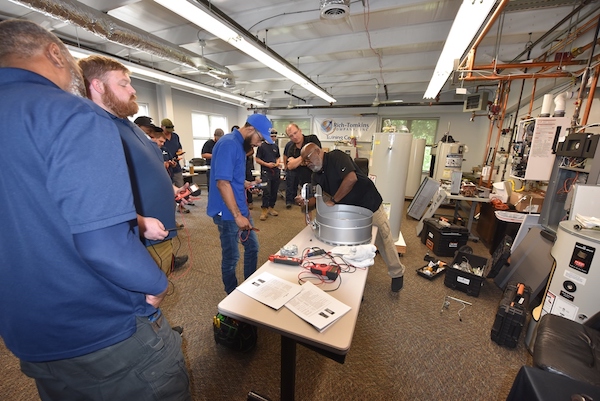
The global geopolitical instability also keeps me up at night. We all saw the effects of Russia’s invasion of Ukraine and the ensuing war. That continues to be impactful to supply chains and economies, especially in Europe. But there are several other hot spots in the world that could erupt, whether it be wars or new COVID outbreaks, and have dramatic impacts on the global economy and supply chains.
MH: Are you seeing any signs of positivity? If so, where?
Carnevale: Absolutely. I’m actually somewhat bullish for our business for 2023. As I’ve mentioned in articles and presentations over the last year and a half, we’ve been in a period of correction from the over buying of water heaters in 2020 and 2021, but the worst seems to be behind us. It is also great to re- engage with our customers and business partners in person, and their businesses have mostly normalized to what they were pre-pandemic.
MH: Without getting too deep into the weeds, how do regulations help or hinder the manufacturing process, and are there any significant ones coming down the pike of which contractors should be aware?
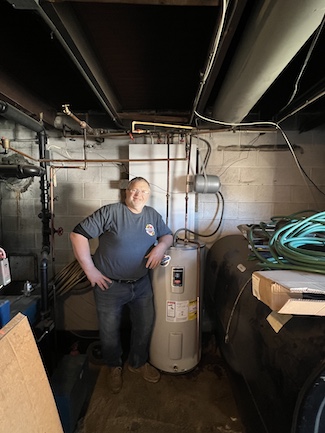 Carnevale: Really, John? How long do we have? If your question is specific to the impact on manufacturing processes, significant regulations which require manufacturers to build entirely new models are a huge challenge. Imagine that you have a factory which builds products that are currently compliant, and then five years from now, you have to build a completely different products to meet new regulations. That sounds like a sufficient amount of time, right? But you have to continue to produce the current product while you are re-tooling the factory to build new product. There is no practical way that you can just remove all the old equipment, roll in the new equipment, flip a switch to stop making the old models and start making the new models on the date the new regulations take effect. We expect that the Department of Energy’s upcoming NAECA 4 regulation will require us to do just that. We’ll figure it out, but it’s a significant challenge and it will be very expensive.
Carnevale: Really, John? How long do we have? If your question is specific to the impact on manufacturing processes, significant regulations which require manufacturers to build entirely new models are a huge challenge. Imagine that you have a factory which builds products that are currently compliant, and then five years from now, you have to build a completely different products to meet new regulations. That sounds like a sufficient amount of time, right? But you have to continue to produce the current product while you are re-tooling the factory to build new product. There is no practical way that you can just remove all the old equipment, roll in the new equipment, flip a switch to stop making the old models and start making the new models on the date the new regulations take effect. We expect that the Department of Energy’s upcoming NAECA 4 regulation will require us to do just that. We’ll figure it out, but it’s a significant challenge and it will be very expensive.
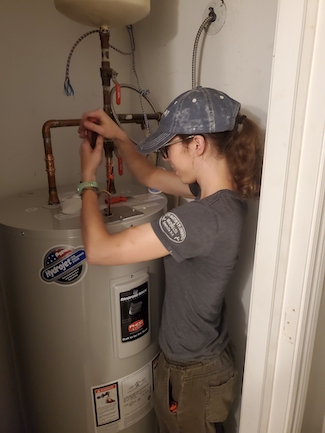 Contractors need to prepare for a significant shift to heat pump water heaters, condensing commercial gas water heaters, and condensing boilers. Every indication is that is what the DOE will require, and several states are moving in that direction even faster and more aggressively. Some municipalities have already banned gas water heaters, and some have announced that they will within the next 5 to 10 years. I would encourage contractors to really dig into the regulations pending in their market area and prepare accordingly.
Contractors need to prepare for a significant shift to heat pump water heaters, condensing commercial gas water heaters, and condensing boilers. Every indication is that is what the DOE will require, and several states are moving in that direction even faster and more aggressively. Some municipalities have already banned gas water heaters, and some have announced that they will within the next 5 to 10 years. I would encourage contractors to really dig into the regulations pending in their market area and prepare accordingly.
As it relates to contractors, what is your “message” to them as it relates to your company and its line of products and services? Last year, Bradford White celebrated the 30th anniversary of our commitment to the professional installation of our products. As stated in those messages, we will remain “For the Pro” with the products, services and support we bring to our contractor customers. We will strive to continue to be your best partner for success in your business.
MH: What specifically does BW have its sights set on in 2023? (New products, working with assocs. for workforce development, etc.)
Carnevale: Despite some of the headwinds that still exist with regard to the supply chain and the economy, we are excited about 2023. As you know, toward the end of last year, we released our new formula for Vitraglas tank lining where it now includes Microban. The excitement around that has been tremendous and we expect Vitraglas with Microban to help our customers win against the competition in both residential and commercial water heaters. We also have several other new products that launched in 2022 and even more to be announced in 2023.
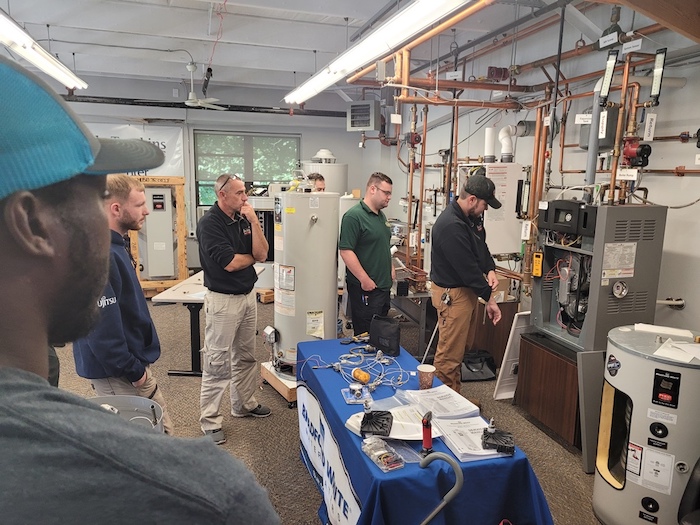
We are also excited to be expanding the reach of our Industry Forward (IF) program, which was created to put a focus on the wonderful career opportunities available in our industry. As you know, all of us in this industry have workforce challenges so we expect to get more traction for IF in 2023 to shine a brighter spotlight on this challenge and increase awareness of our industry’s career opportunities to the general public.
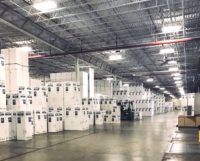
We recently asked some of the major players in the phvac markets to give us their feel of how the economy, supply chain, etc. plays out for 2022. We caught up with Bradford White’s Bruce Carnevale, president and CEO, and here are his thoughts on the rest of the year and beyond. MH: We’ve all experienced Read more
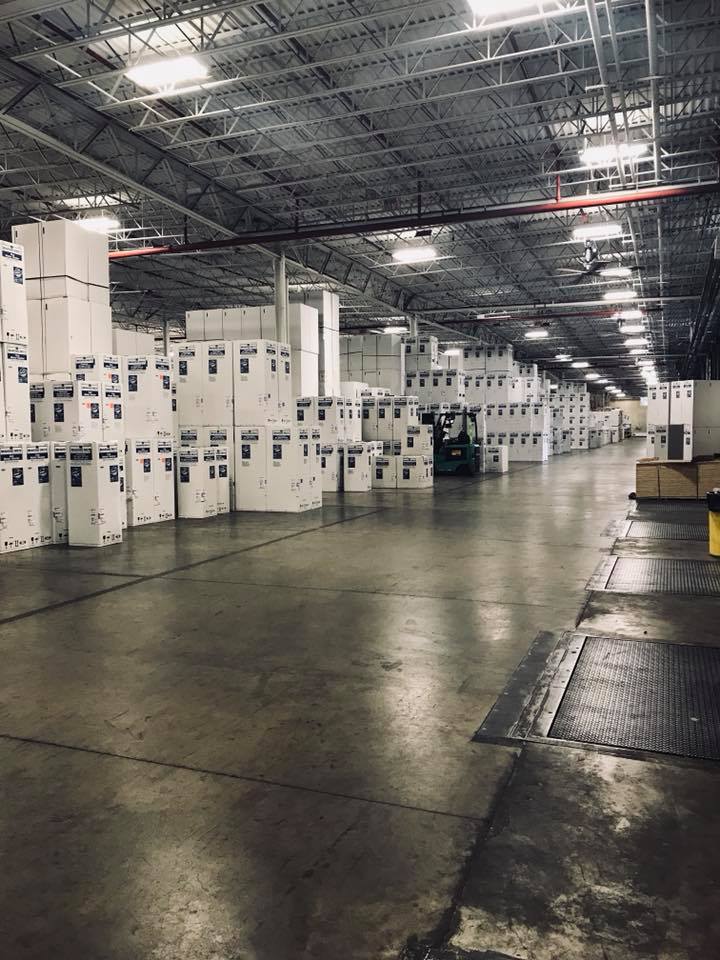 We recently asked some of the major players in the phvac markets to give us their feel of how the economy, supply chain, etc. plays out for 2022. We caught up with Bradford White’s Bruce Carnevale, president and CEO, and here are his thoughts on the rest of the year and beyond.
We recently asked some of the major players in the phvac markets to give us their feel of how the economy, supply chain, etc. plays out for 2022. We caught up with Bradford White’s Bruce Carnevale, president and CEO, and here are his thoughts on the rest of the year and beyond.
MH: We’ve all experienced supply chain shortages, whether it’s industry related or things such as computer chips, plastics, bacon, etc., for example. Do you project a turnaround soon or within the next 6-12 months for certain materials that relate to your specific company?
Carnevale: While the supply chain issues for some materials and components is improving, for others it’s actually getting worse. In the aggregate, I think that supply chain issues will continue to impact our business for most of 2022, and for some components, into 2023.
MH: We are in the midst of some of the highest inflation rates since the early ‘80s. Do you think that higher inflation becomes a “newer normal”? Explain.
Carnevale: No. Inflation is somewhat of a self-correcting problem. One of the many economic indicators we follow is the consumer savings rate, which was at an all-time high during the peak of COVID. It is now back to normal levels, so at some point, prices increase to the point where consumers are no longer willing or able to pay the higher prices. Demand then falls, and that puts downward pressure on prices. This will go back through the supply chain from the consumer to commodities suppliers, and I expect we will see deflation on some products driven by lower material costs. There will, however, be a “new normal” for prices because of increased labor costs. Those costs are very unlikely to adjust downward, and therefore even when commodities adjust, the total costs will still be higher than pre-COVID.
MH: In general, how do you see the economy short-term? Give a few examples of how you draw that conclusion (housing starts, commercial construction, etc.).
Carnevale: I have concerns about the macro-economy for 2022 and 2023 and have had concerns since the beginning of 2021. I don’t see how we can’t have a significant slowdown in the economy with all of the headwinds we are facing: Inflation, rising interest rates, energy prices, labor shortages, global instability, the politics of a mid-term election year, etc. I see the slowdown taking hold going into the second half of 2022.
MH: Where are you seeing signs of positivity, if any?
Carnevale: Clearly COVID cases are falling, and hospitalizations and deaths are significantly lower with Omicron vs. previous variants. There is hope that we are nearing the end of the pandemic phase and entering the endemic phase.
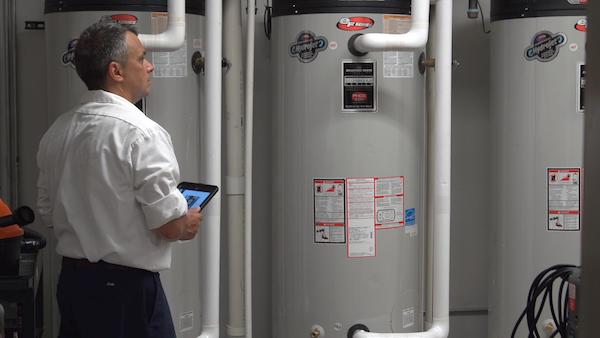
MH: How do you as manufacturers work with customers who are dealing with longer lead times and/or higher prices? Is it a matter of open lines of communication?
Carnevale: Each manufacturer deals with it differently. Our team has communicated very openly with customers when issues arise, or even when we expect issues to arise so that our customers can have the most time and information to make appropriate adjustments in their operations. So, yes, transparent communication is the best way to deal with rapidly changing conditions.
MH: It seems that in today’s employment landscape, it’s hard to find good labor, whether it’s truck drivers, waiters at restaurants, etc. In our industry, how do we continue the fight to highlight the trades as a great career choice?
Carnevale: Very true. The restaurant where I had lunch this afternoon had a sign on their entrance door that read: “Every business is short on labor. Please be kind to those who showed up to work!” That really sums up the current labor environment.
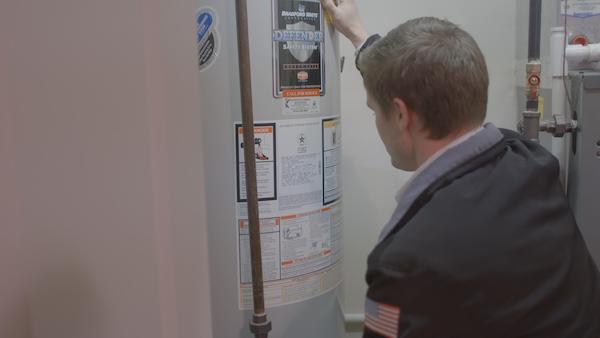
As everyone in our industry knows, the labor shortage was our biggest challenge before COVID, and it will continue to be post-COVID. There are many industry initiatives working to position the trades as a great career choice, and many companies in our industry are working diligently to promote the trades as well. I still believe what we are missing is a well-funded, well-coordinated public/private message with a big voice and a clear message that would connect with younger audiences. While we continue to work towards that, Bradford White will continue our initiatives, and 2022 we will be launching an entirely new foundation designed to promote our industry and attract new people.
MH: In spite of COVID, people must move on. How has your company evolved—or continued to march forward—over the past two years, and talk about any new initiatives, expansions, etc.
You’re right, organizations and individuals must move on. We have found that it is very helpful to shorten the time horizon for goals and objectives, otherwise you can really get bogged down by all the negative things happening all around you. So, whereas you might have had the monthly or quarterly goals, now you have to look at them weekly, or even daily. That doesn’t mean that you don’t still have long term, strategic goals, but rather that you shift more of your focus to just getting through each day or week.
From a business philosophy perspective, we, and I think most organizations are looking at supply chain improvements and diversification. I think some of the important trends will be shortening supply chains by working with suppliers closer to manufacturing operations and reviewing the risks of just-in-time inventory models versus the overall value.

It’s that time of year again where media, prognosticators and media prognosticators try to look into the immediate future to predict, and make sense of, the short-term economy. And, yes, even in this uncertain climate. According to the Air-Conditioning, Heating & Refrigeration Institute (AHRI), U.S. shipments of residential gas storage water heaters for January 2021 Read more
It’s that time of year again where media, prognosticators and media prognosticators try to look into the immediate future to predict, and make sense of, the short-term economy. And, yes, even in this uncertain climate.
According to the Air-Conditioning, Heating & Refrigeration Institute (AHRI), U.S. shipments of residential gas storage water heaters for January 2021 increased 3.4 percent to 397,342 units, up from 384,213 units shipped in January 2020. Residential electric storage water heater shipment saw a 2.4 percent increase in January 2021 to 395,640 units, up from 386,291 units shipped in January 2020.
Commercial gas storage water heater shipments decreased 7.8 percent in January 2021 to 6,642 units, down from 7,207 units shipped in January 2020. Commercial electric storage water heater shipments decreased 7 percent in January 2021 to 11,737 units, down from 12,626 units shipped in January 2020.
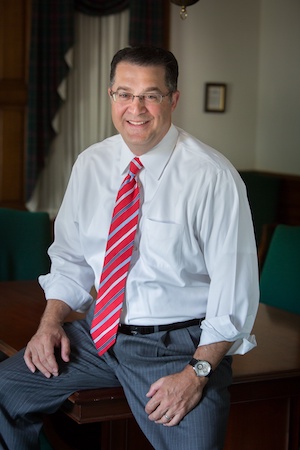 Having said all of that, Mechanical Hub decided to go right to the source to get an up-close sense of how the market is faring. We continue our Forecast Series with Bruce Carnevale, president & CEO, Bradford White.
Having said all of that, Mechanical Hub decided to go right to the source to get an up-close sense of how the market is faring. We continue our Forecast Series with Bruce Carnevale, president & CEO, Bradford White.
MH: When it comes to 2021 industry forecasts, the most resonant word I hear is optimistic. That word can become hollow if it doesn’t have any substance backing it up. I’ve read reports that residential service repair and remodel may remain constant with a slight increase in early 2021. What does the short-term economy look like as it relates to BW?
CARNEVALE: In a word, challenging. While demand for our core residential products remains strong, material and labor costs have risen substantially. Labor availability for manufacturers is still a significant problem and has been exacerbated by COVID-19 complications and government policies. Steel prices are at or near all time highs, and supply is becoming an issue for some manufacturers. These factors lead to longer lead times, higher prices to the end user, and product shortages.
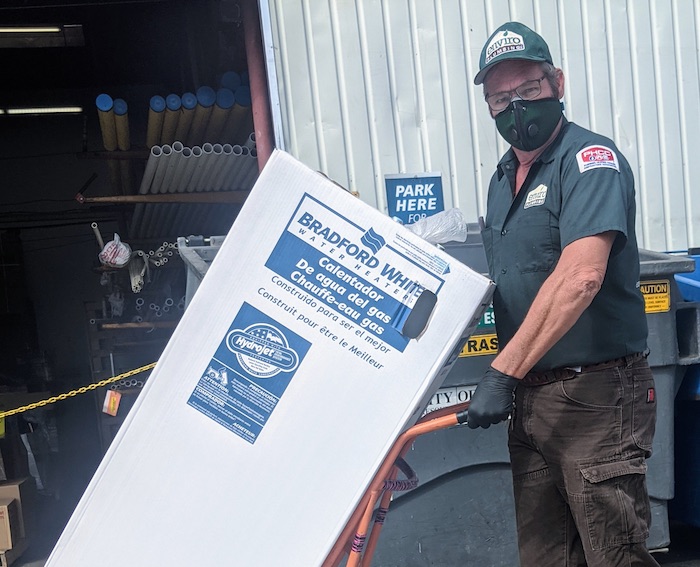
We know intuitively that the “nesting” effect has led to increased demand because household appliances are being use much more that they normally would be. There is no good data on magnitude of the increased demand, nor how long it will last.
Commercial demand has recovered slightly, but with commercial businesses still in some state of shutdown in much of the country, we don’t see that segment starting to recover until the second half of 2021. It is unlikely that the commercial segment will fully recover to pre-pandemic levels until after 2022 because so many businesses will permanently shut down as a result of the pandemic-forced shutdowns.
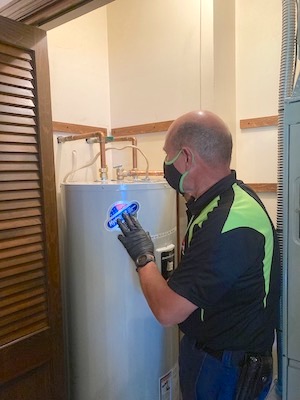 MH: What are some indicators you look at to determine trends, movements, etc.?
MH: What are some indicators you look at to determine trends, movements, etc.?
CARNEVALE: We look at traditional indicators such as housing starts re-sales, mortgage rates, CPI, consumer confidence, manufacturing output and inventories, unemployment rates, etc. Several years ago, we incorporated student loan debt into our analyses since it has such a significant impact on first time homebuyers. Additionally, we closely follow regulations and all levels and social preferences to determine their impact on product trends.
MH: I read somewhere that at the rate the U.S. is distributing the vaccine, we should be back to “normal” by 2024. Perhaps that’s a bit overly dramatic, but how does (has) BW positioned itself from the “fallout” of COVID-19?
The honest answer is that nobody really knows when we will be back to normal. Even after we are, there will be lasting effects from the pandemic. We are following the data and trends closely and adjusting our strategy accordingly. We expect some pre-pandemic trends to change significantly. For example, the trend toward urbanization will change as more people are able to work from home. This leads us to believe that the housing new construction will shift away from multifamily towards single family as people can move further out from cities.
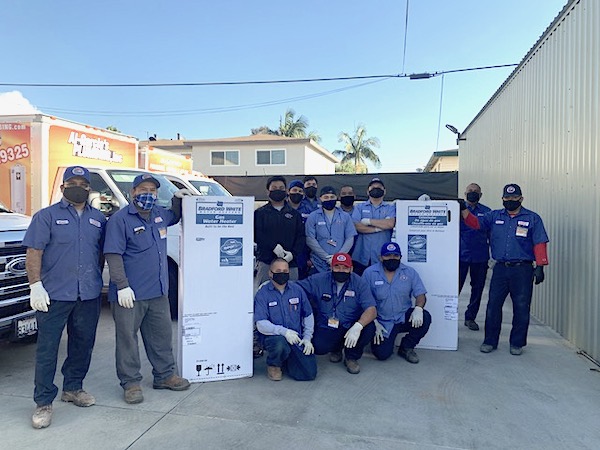
Additionally, we are solidifying supply chain and strengthening our contingency plans, further developing our own work force, and investing significantly in R&D to bring relevant, innovative products to the post-pandemic market.
MH: Is the only certainty heading into early 2021 uncertainty? How do you forecast and budget for such uncertainty? (Or is it fairly certain at this point during the pandemic?)
CARNEVALE: Uncertainty has made forecasting for 2021 is as much art as it is science. We used an immense amount of data, both historical and forward-looking, and applied significantly more assumptions than we typically would. We also included insights derived from some original research projects we commissioned.
MH: Without getting overly political, does a change at the presidential level (and congress) change the outlook for your company, if at all? (Infrastructure, regulations, green energy initiatives, etc.)
CARNEVALE: Yes. It is no secret that the Biden administration will have a very different policy positions than the Trump administration. Some of the expected changes may be helpful, and others will present challenges. Infrastructure legislation, for example, will be good for our industry. We know there will be a focus on green energy initiatives, and that too can be good for our industry if they are thoughtfully applied. The regulatory environment will become more challenging, but we are hopeful that the new administration will partner with manufacturers in developing new regulations.
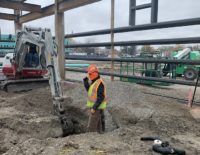
It’s that time of year again where media, prognosticators and media prognosticators try to look into the immediate future to predict, and make sense of, the short-term economy. And, yes, even in this uncertain climate. Mechanical Hub will be featuring a series of exclusive Q & A sessions with industry leaders and players to get Read more
It’s that time of year again where media, prognosticators and media prognosticators try to look into the immediate future to predict, and make sense of, the short-term economy. And, yes, even in this uncertain climate. Mechanical Hub will be featuring a series of exclusive Q & A sessions with industry leaders and players to get their views on the future, and living in a COVID world. The second part of the series, we talk with Matt Erickson, CEO, C.J. Erickson Plumbing Co., Alsip, Ill., a plumbing contractor for commercial and site work since in the Chicago area since 1906.

MH: When it comes to 2021 industry forecasts, the most resonant word I hear is optimistic. That word can become hollow if it doesn’t have any substance backing it up. What does the short-term economy look like as it relates to your company?
ERICKSON: I hear the same “optimistic” description but believe that it is a National forecast and includes all sectors. We’ve been following the AIA info since March and believe non-residential construction will be down in 2021 and look brighter for 2022 in the local Chicagoland market. Our estimating has been steady so far this year compared to 2020 but don’t feel the pace will remain the same for February and March.
MH: Piggybacking off of that , what are some indicators you look at to determine trends, movements, etc.?
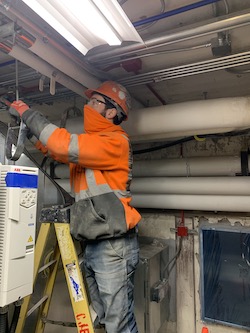 ERICKSON: In addition to the AIA data, we follow local trade employment statistics (how many tradesmen are out of work), we look at hours worked by our field employees and compare week, month and year over year. Our estimating data can point to general trends in quantity and size of projects in the market.
ERICKSON: In addition to the AIA data, we follow local trade employment statistics (how many tradesmen are out of work), we look at hours worked by our field employees and compare week, month and year over year. Our estimating data can point to general trends in quantity and size of projects in the market.
MH: Do you think companies have enough backlog to carry them through at least the first half of 2021?
ERICKSON: That’s a tough one… we’re seeing a fair number of opportunities but they are smaller in value and duration. I think there will not be enough large, long duration (12 – 24 months) projects available this year to maintain the collective industry hours worked in 2020. Prices are falling and end users are getting great deals as everyone competes for fewer good opportunities.
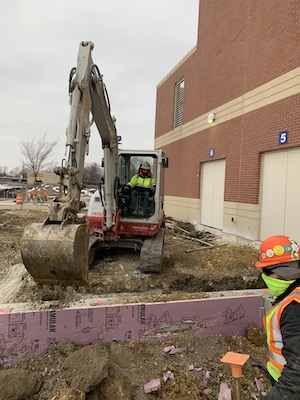 MH: I read somewhere that at the rate the U.S. is distributing the vaccine, we should be back to “normal” by 2024. Perhaps that’s a bit overly dramatic, but how does (has) C.J. Erickson positioned itself from the “fallout” of COVID-19?
MH: I read somewhere that at the rate the U.S. is distributing the vaccine, we should be back to “normal” by 2024. Perhaps that’s a bit overly dramatic, but how does (has) C.J. Erickson positioned itself from the “fallout” of COVID-19?
ERICKSON: The non-residential construction process can be time consuming and I believe the industry will feel the pain from the pandemic long after the some sort of “normal” returns for the most affected industries. We are taking some time to clean-up some processes and update our training, in preparation for the gradual climb back to normal.
MH: Does a change at the presidential level change outlook for your company, if at all? (Infrastructure, green energy initiatives, stimulus, etc.)
ERICKSON: Possibly, if any of the programs or spending props up the commercial and industrial constriction market. Otherwise, I do not believe the new administration will change the outlook for our company.
 Matt Erickson is CEO of C.J. Erickson Plumbing Co., a Chicago-area plumbing contractor since 1906. C.J. Erickson Plumbing Co. employs over 100 people including union plumbers, laborers and operating engineers. We specialize in commercial plumbing, industrial plumbing, hydro-excavation and site utility and underground services.
Matt Erickson is CEO of C.J. Erickson Plumbing Co., a Chicago-area plumbing contractor since 1906. C.J. Erickson Plumbing Co. employs over 100 people including union plumbers, laborers and operating engineers. We specialize in commercial plumbing, industrial plumbing, hydro-excavation and site utility and underground services.

Mechanical Hub recently spoke with Bradford White Corp.’s Bruce Carnevale, president and chief operating officer, about the state of the economy short term, and a bit about the industry in general. Here is an excerpt from the Q&A. How do you see the short-term economic outlook? a) Residential Plumbing — This should remain strong, due Read more
 Mechanical Hub recently spoke with Bradford White Corp.’s Bruce Carnevale, president and chief operating officer, about the state of the economy short term, and a bit about the industry in general. Here is an excerpt from the Q&A.
Mechanical Hub recently spoke with Bradford White Corp.’s Bruce Carnevale, president and chief operating officer, about the state of the economy short term, and a bit about the industry in general. Here is an excerpt from the Q&A.
How do you see the short-term economic outlook?
a) Residential Plumbing — This should remain strong, due in part to a good economy and the steady increase in home renovation projects. New home construction levels also remain stable, providing additional residential plumbing opportunities.
b) Commercial Plumbing — Feedback from specifiers, engineers, contractors and wholesalers, as well as key indicators from resources such as the Architectural Index, indicate that the commercial/mechanical contractors are largely backlogged through 2018. Also, it is important to note is that the bipartisan focus on infrastructure, will likely have both a short and long-term positive impact for commercial plumbing work.
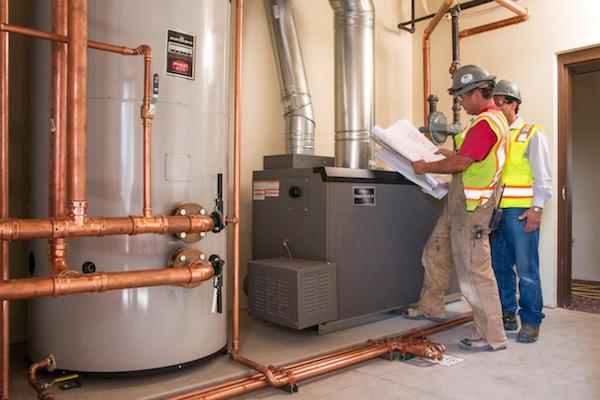
c) Residential Hydronics — With the ever-broadening array of residential hydronic products, particularly combi-style options, the economic outlook is positive. Additionally, the same economic trends that will affect residential plumbing in 2018 come into play to enhance the outlook for residential hydronics.
d) Commercial Hydronics — Similar to commercial plumbing, all indications are that the prospects for commercial hydronics will remain solid through 2018. Between currently scheduled workloads and national, state and local infrastructure initiatives, the commercial hydronics outlook should remain healthy well beyond 2018.
What are the top indicators you examine to form these projections?
We aggregate a variety of data to help us arrive at our projections regarding our business and the industry at large. First, we have worked with a leading economist and his team over the past several decades to develop a proprietary trend report that gives us both a national and regional perspective on future sales and growth opportunities. We also examine industry related stock trends and look at data from other sources such as the National Association of Realtors, U.S. Census reports and the Dodge Report, just to name a few. Lastly, we look at these data points relative to the valuable information we get from our specifier, engineer, contractor and wholesaler customers.
What are some trends/factors that look positive—technology, construction, housing starts, units sold, etc.
There are a lot of good signs, most telling of which are the industry statistics that show higher sales, with water heaters in particular being up more than 5% over last year. Construction and housing trends also remain positive for the time being and economic growth is steady. We are also seeing some regional shifts in terms of energy utilization, most notably a move away from fossil fuels to electricity. The positive trend here is that as energy advocates and utility companies work more closely with manufacturers, we can be more responsive in terms of developing and providing the most relevant and efficient products possible to address consumer needs.
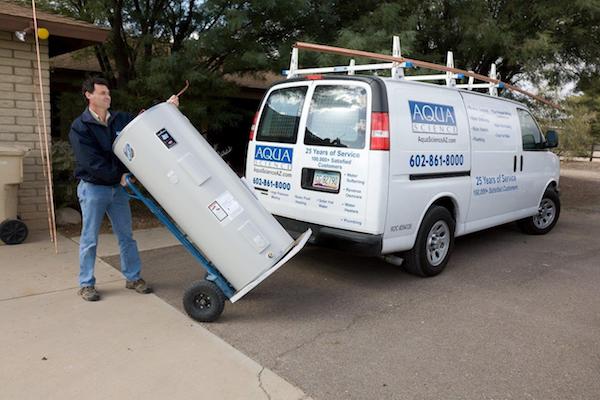
Conversely, what are some things that might concern you as you look to the future?
In a heated economy with GDP growing up to 3% and beyond, there could be a tightening of labor markets, increases in material costs, and a more accelerated rise in interest rates. A dramatic rise in interest rates could slow down spending, particularly when it comes to first-time home buyers, a trend that is already a concern as many of these potential home buyers are dealing with significant college debt. We also cannot ignore what’s happening on the global front, as the potential for more international conflicts or disturbances appears to be on the rise.
With year one under the new President in the rear view, in general, and from a company standpoint, how would you review his performance?
From a practical standpoint, his ability to address regulatory issues affecting domestic business growth has been a plus. His administration has also brought about a higher level of cooperation between the regulatory bodies and industry, helping to moderate what were once primarily adversarial relationships. By doing so, we can work together to bring about policies that are ultimately in the best interest of consumers. I think this change alone has had a significant impact on 2017’s economic growth, even more so than the anticipated tax reform benefits. Overall, despite the clumsiness of some of the administration’s messaging that has tarnished their results, the President deserves credit for taking action on the issues he promised would be addressed.
What are some things that directly affect the industry that you would like to see a more concentrated effort?
There should certainly be continued focus on modifying or even eliminating certain regulations that have stifled economic growth, particularity here in the United States. This would help companies like Bradford White, who prefer to keep their manufacturing facilities in this country. Also, a more coordinated effort between industry organizations to address common concerns would be beneficial. Various manufacturers, trade organizations and wholesaler associations are already doing great things on their own, but their combined strength would likely carry greater weight, thus driving quicker, more universally acceptable results. Another area of concentration that we can positively affect together is product training. Manufacturers are steadily increasing their efforts in this area, but doing more to work directly with trade organizations and suppliers on training initiatives would likely bring be more effective.
